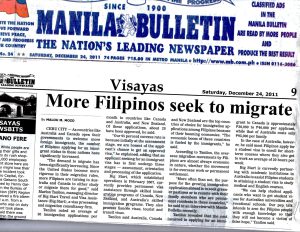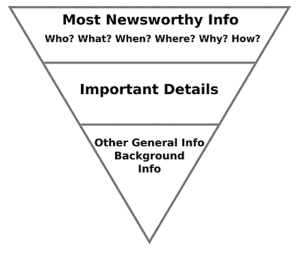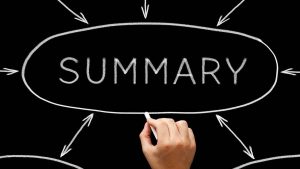13 Intermediate
Niel Anthon Ombajen
Chapter 5:
Learning Objectives
- Analyze the various roles and contributions of community members, fostering an understanding of interdependence and collaboration within the community.
- Identify the basic parts of a news articles developing a further understanding on the structure of news articles.
- Know how to summarize a story coherently, from identifying the main points to the sequence of events, improving the clarity and conciseness.
Vocabulary
- Community – is a group of people who share the same interests, values, and have something in common.
- Roles – is a set of connected behaviors, rights, obligations, beliefs, and norms as conceptualized by people in a social situation.
- News – is information about current events. This may be provided through many different media: word of mouth, printing, postal systems, broadcasting, electronic communication, or through the testimony of observers and witnesses to events.
- Summarize – give a brief statement of the main points of a story, article, movies, events, etc.
Essential Knowledge

What is a community? A community is a group of people who share the same location, interest, and goals. A community can interact with each other to be able to create bond, develop connections and build relationships with one another. Within a community, various individuals are involved where they also have their roles. These roles have their own specific functions that they need to execute so that the community will function accordingly as well. The following are the types of communities where certain individuals belong:
1. Urban Community: An urban community is a group of people living in a specific area, and it has its own distinct needs and structure. These communities are often crowded and depend on surrounding areas for food and resources, while they provide various services to those areas in exchange.
Here examples of common members in urban communities:
- City Officials – they are the ones who govern and make policies to ensure the peace and harmony of the community.
- Artists and Performers – these people can be musicians, painters, and actors who contribute to the cultural scene.
- Company and Business Employees – they work for companies that run business that contributes to a larger scope of the operations in the community.
2. Rural Community: Rural communities often focus on agricultural lifestyles and face specific challenges, like getting access to healthcare and services since they are far from providers. Additionally, these areas usually lean more conservatively, as residents tend to rely on themselves and their neighbors rather than the government.
Here are examples of common member in rural communities:
- Farmers – these people manage agriculture-related activities such as planting crops and tending livestock used for consumption.
- Forestry Workers – They are involved in conservation efforts. They maintain the balance of the environment where they prohibit denuding the forest to prevent environmental disasters.
- Local Artisans – they create handmade crafts which they sell to the market in exchange for money.
3. Neighborhood: A neighborhood is a smaller part of any of these types of communities. It consists of people living close together who might share local services, like shops or an elementary school nearby.
Here are examples of common member of a neighborhood:
- Families – a family is a group of people connected by blood, marriage, or adoption, and they often share a home together.
- Neighbors – these are the people who live nearby and build friendships through casual chats, shared experiences, and everyday interactions. They often help each other out, whether it is lending a cup of sugar, watching each other’s kids, or just being there to listen. This kind of support creates a close-knit community where everyone feels a little more at home.
Activities
General Instruction: Please read the following activities and carefully read the instructions. These activities will enhance your skills in reading and writing in the target language, and will develop your creativity. You are given 15-minutes to finish your tasks. Kindly pay attention on the specific instructions given on each activity of this course.
Conversational
Instruction: Now that you have learned the various members of a community and their roles, you will collaborate with two people (3 members each group), and discuss the following questions:
- Kindly describe your role in the community where you belong right now.
- How do you think you are making a difference for the people around you?
- How do you see your role in your community, and what do you think is the most important part of it?
- If you could be anyone in your community (or in any community mentioned in the discussion) for a day, what would it be and why?
After discussing with your groupmates, you will choose a person who will share what the group has discussed with the class briefly.
Technical
Technical: Dissecting a News Article

A news article is a written piece that shares important information about current events or issues that matter to people. You can usually find these articles in newspapers, magazines, and online.
The main goal is to provide readers with clear, factual details, often answering questions like who, what, where, when, why, and how. While the format can change, good news articles focus on being clear and on point, which makes it easier for readers to understand and stay interested. A news article is aligned to a specific structure, and it usually begins with a lead that catches the overall substance of the story. Most importantly, it proceeds with laying out supporting information in a coherent manner. Consider the following structure below:
The Inverted Pyramid Structure

LEAD
In the first paragraphs of a new article, it contains the most crucial information where it needs to answer the 5Ws and 1H (What, Who, Where, When, Why, and How). It is important that a news article answers these questions to get the reader’s attention by giving them a concise summary of the news.
BODY
The body is where the supporting details can be found. It provides the story with the important context of the story. Typically, the information being presented here is structured in a descending order of importance (eyewitness accounts, Official Statements)
TAIL
This part of the news usually contains the least important information. It simply provides the background and other related context of the story. This can be modified and will not affect the gist of the story or the entirety itself.
Activity
Instruction: Now that you have learned the basic parts of a news article, you are going to read and identify the different parts of the story by answering the given questions below:
Two students from Sta. Cruz win medals in Math Olympiad
BEA Shyne N. Betonio and Princess Jeth Avrielle M. Alcuizar won bronze medals at the recently concluded Philippine International Mathematical Olympiad Final Round (PhIMO 2024) held at the EVM Convention Center in Quezon City from September 20-23, 2024.
Both Betonio and Alcuizar hail from Sta. Cruz, Davao del Sur. Betonio, who studies at Sta. Cruz National High School, claimed victory in the Secondary 2 category, while Alcuizar, from Sta. Cruz Central Elementary School, won in the Kindergarten category.
Teacher Queency Faith Alcuizar, who coached both students to success, was also recognized with the Outstanding Coach award.
Ms. Queency Faith, from Sta. Cruz National High School, is the Math 8 and Advanced Geometry teacher of Bea, as well as the mother of Princess.
Bea and Princess had previously won bronze medals in the Hong Kong International Math Olympiad Final Round (HKIMO) – Online Round in the same categories.
PhIMO and HKIMO are competitions under the Math Olympiads Training League Inc. (MOTLI). Only those who win medals in the national rounds are eligible to participate in the final or international round.
“As first-time delegates of Sta. Cruz, Davao del Sur, we are hoping to inspire others that Math is fun and could bring us to places. May this also open the doors para mas suportahan din ang academic competitions especially math olympiads. Yung goal ko po talaga ay ma-prove na kaya din ng mga Sta Cruzians makipagsabayan sa private and science high schools despite being novice in joining global competitions like these,” Coach Queency told Superbalita Davao in an interview. JRN
Creative
Creative: Let’s make a summary!

What is a summary? A summary is a brief explanation of a larger text piece. It is typically used to make a quick run-through of what the whole text is all about without having to read it again from the start to the last. A summary encompasses wide range of subjects. It could be a summary of a book, article, story, movie etc. Now let us learn the five (5) simple steps on how to make a summary.
- Read and take notes.
First things first, you need to read or watch the original text fully before you can make a summary out of it. While reading, you may also take a break to jot down the important parts and then continue again with the process. This will help your summarization clear and easy.
- Start with introductory sentences.
In school or formal settings, summaries usually start with a sentence that tells the title of the work and its author. This helps the reader know what the summary is about right away. But if the work has already been mentioned, you might not need to say the title and author again. For instance, if your class is already talking about Shakespeare’s Romeo and Juliet, you can skip that part in your summary.
- Explain the main points.
You need to take notes of the main points and the sequence where they appear. By doing this, it allows your summary to be more cohesive and easier to understand. You may use the WHW method or the what, how, and why:
- What are the key ideas or events?
- How do they develop throughout the work?
- Why are they important to the work’s overall message?
Remember, you should be selective on the point that you include. Summaries are about the bigger picture, not the small details.
- Organize your summary to ensure a smooth flow.
Your summary should be clear and easy to follow. Use words that help connect your ideas so they flow smoothly from one to the next. Try to organize your summary like the original work. Even though it’s shorter, it should still feel complete on its own. In simple terms, make sure it has a clear beginning, middle, and end.
- Conclude by restating the author’s thesis
Finish your summary with a clear statement that effectively captures the author’s main argument or purpose. Remember, in making a conclusion you should not include another information as this may result to confusion to the readers. In concluding your summary, you may want to have a sense of closure so that the reader will know that it is the end part of what happened in the original text.
Activity
Instruction: You are going to watch a short video about a short story entitled “Ang Kalupi” which was authored by Benjamin Pascual. After, watching the video, you are going to make a one-paragraph summary of the story. In writing the summary of the story, you must use the English language.
Let’s Check!
Key Takeaways
Type your key takeaways here.
- Within a community, every member has a role to execute which is significant in maintaining the operation and balance of the community.
- A news article is a written piece that shares important information about current events or issues that matter to people.
- A summary provides a clear and concise explanation of a bigger text without having to read it from the start.
